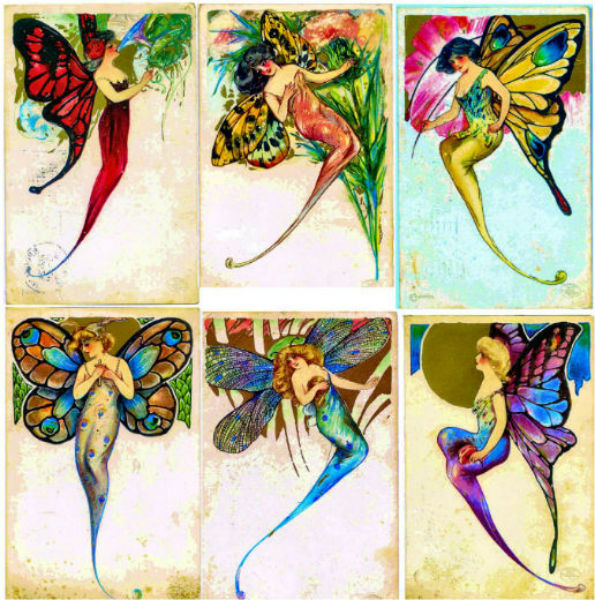
IOLA, Wis. – Deltiology, numismatics and philately are reportedly the three most popular interests in the field of collecting. In just the first line of this article, I have managed to make it sound confusing, pretentious and even strange (especially that last one, which seems like something you’d read in the police blotter). “In a raid early this morning police captured three philatelists.” Nevertheless, these are the actual names for postcard, coin, and stamp collecting, respectively.
This article will categorize landmarks or eras in American postcard production and useful methods for identifying and assigning a date of manufacture.
In 1913, during the height of postcard mania, the United States Post Office (USPS website, www.usps.com) estimates more than 900 million postcards were sent by mail.
This is a staggering statistic when you consider that the population of the United States during the same year was less than 97.5 million people. That averages out to just more than nine postcards a year mailed for every person in the country. With hundreds of millions of postcards mailed each year during the Golden Age of Postcards (1907-1915), it is not surprising that antique postcards are so popular and still readily available to collectors.
In identifying and dating postcards there are specific eras, defined by both style and dates; however, these dates do not account for the transition from one era to the next. It is important to remember that these “eras” refer to the printing on the back of the postcard whereas postcards identified as Real Photo, Art Nouveau and Art Deco are classified by the image on the front of the postcard. Real Photo, Art Nouveau, and Art Deco period postcards were produced in more than one of the classic postcard eras. For example, Art Nouveau period postcards were produced during the Pioneer Era, Private Mailing Card Era, Undivided Back Era, and the Divided Back Era. Changes in style and production format overlap.
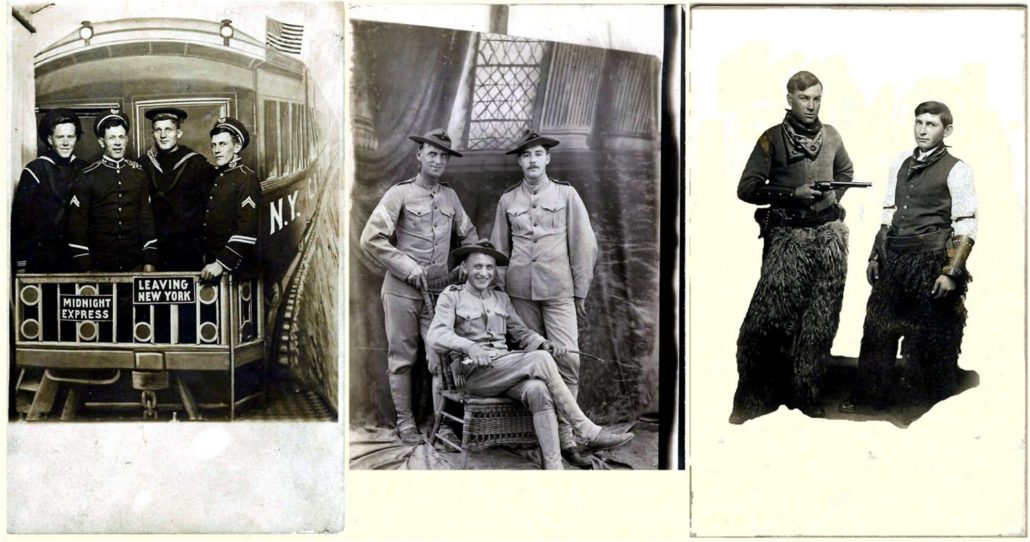
Postcards begin with the Pioneer Era (1889 to 1898), which has its roots in the Columbian Exposition in Chicago in May 1893 when vendors exhibited and sold picture postcards to the public. Although prestamped postcards had been introduced decades earlier, the Columbian Exposition was the first venue that introduced postcards to the masses.
Cards from the Pioneer Era are scarce and easily identifiable by the presence of certain indicators. Those most prized by collectors are known as the “Gruss aus” cards. These were German postcards from the Pioneer Era that usually had several views on the front of the card with the words “Gruss aus,” which is German for “Greetings from.”

It wasn’t long before the American and British markets produced their own domestic multiview cards with the words “Greetings from” on them. The backs of American pioneer cards are not divided, often bear the words “Souvenir Card” or “Mailing Card” and there is no “Act of Congress” acknowledgment. Government-printed postcards during this time required 1-cent postage and have preprinted stamps of Grant or Jefferson. Privately printed postcards required 2 cents of postage and used U.S. postage stamps. Many Pioneer Era postcards have multiple views on the front of the card along with the words “Greetings From” or “Souvenir of.” The back of the card was meant for the address only; any message had to be written on the front of the card.
The next era is the Private Mailing Card Era (1898-1901). As of May 19, 1898, private vendors were allowed to print and sell postcards. These cards bear the words, “Private Mailing Card” and the government notice “Authorized by Act of Congress May 19, 1898.” Postcards still have undivided backs reserved for the address of the recipient; any sentiment or message was limited to the front of the card. Some postcards from this period have a blank white area on the front of the card below the image for a written message. Some cards bear an image on only a portion of the card with most of the front left for a message, and others have no place for a message, which is why many cards from this era have a message written on the image itself.
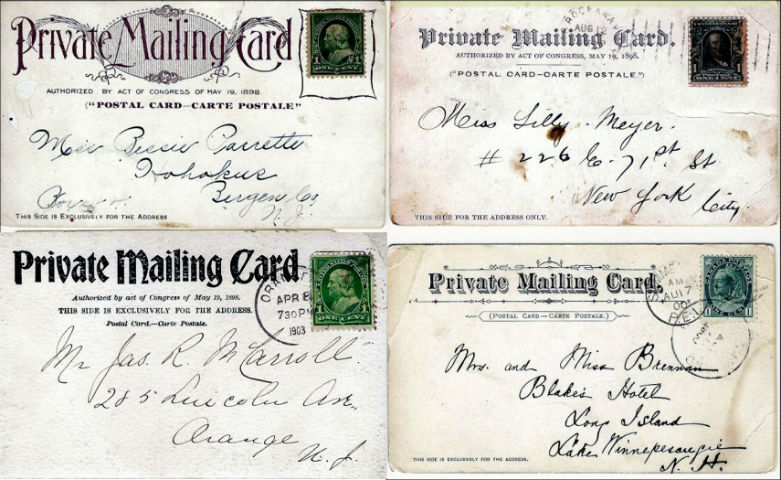
Private Mailing Cards with messages written across the image are no longer considered inferior; they are scarce enough that those with messages written on the image are prized.
The Undivided Back Era (1901-1907) is the next milestone in the production of postcards. Although all postcards prior to this time have undivided backs, this is the first time the use of the words “Post Card” was permitted. On Dec. 24, 1901, the government also allowed private printers to use a logo; the back of the card was still reserved for the address of the recipient.
Perhaps the most famous and easily recognizable logo to the postcard collector is the Tuck lion and unicorn logo, which was first used during this postcard era. The majority of postcards produced during this time were from Europe, especially Germany, which was well known for rich chromolithography. By this time postcards were so popular it is estimated that production doubled every six months. It was during this era that postcards in series of two or more were first printed. Popular topics for series included: romance, fantasy, fashion, comedy, art, theatrical themes and anthropomorphism, especially with cats, dogs, bears, fowl and rabbits.
Then came the Divided Back Era (1907-1915), which was significant in that it marked the first time messages and addresses were included on the back of the postcard. This was a first in the United States. The change came about as a result of the Universal Postal Congress. It was during this gathering that the Universal Postal Union made the decision that postal cards produced by governments of member nations could have messages on the left half of the address side. The decree also called for government-produced cards in the U.S. include messages on the address side of the card.
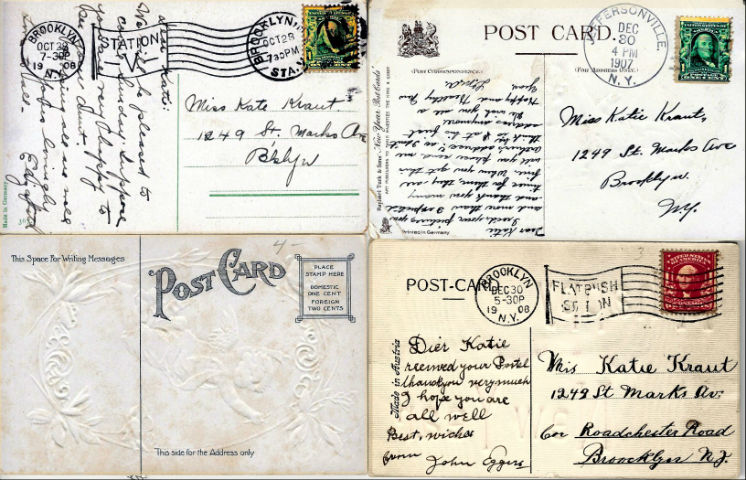
It was during this Golden Age that the most vibrant, memorable, imaginative and nostalgic images were produced. Companies in Germany printed many of these brightly colored images. Suddenly there were postcards for every holiday. There were postcards for New Years, Valentine’s Day, St. Patrick’s Day, Washington and Lincoln’s birthdays, April Fool’s Day, Fourth of July, Halloween, Thanksgiving, Christmas, birthdays, souvenir images, comic cards, and postcards to simply send well wishes. There were even postcards in Hebrew celebrating Jewish holidays and New Year’s Day. Most of these cards, although printed in Germany, were in English; however, there were many greetings in German sent within the United States and to the United States.
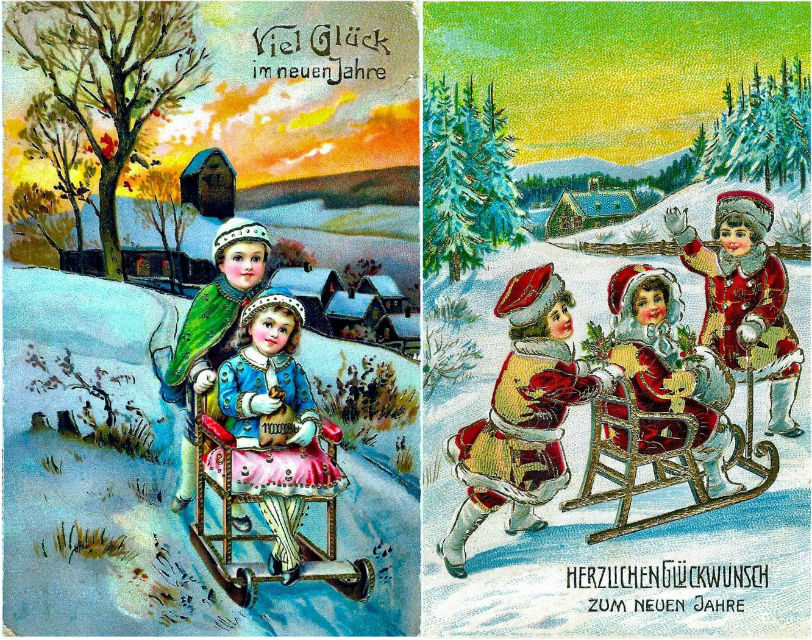
One type of postcard that is rarely addressed is the puzzle postcard. These are a series of four to six postcards with each card being a portion of the image. Once all components in a series were received, they could be placed together like a picture puzzle to complete the entire image. These are very difficult to encounter as they have usually been separated through the years.
The outbreak of World War I dealt a devastating blow to the postcard industry from which it never recovered. Most of the large postcard companies were based in Europe, especially Germany.
The Divided Back Era ended and the Golden Age of postcards yielded to the next era known as the White Border Era (1915-1930).
During the White Border Era many Italian artists such as Umberto Brunelleschi, M. Montedoro and Sofia Chiostri produced some of the most dazzling images in the Art Deco style – especially of women, but these are rarities.
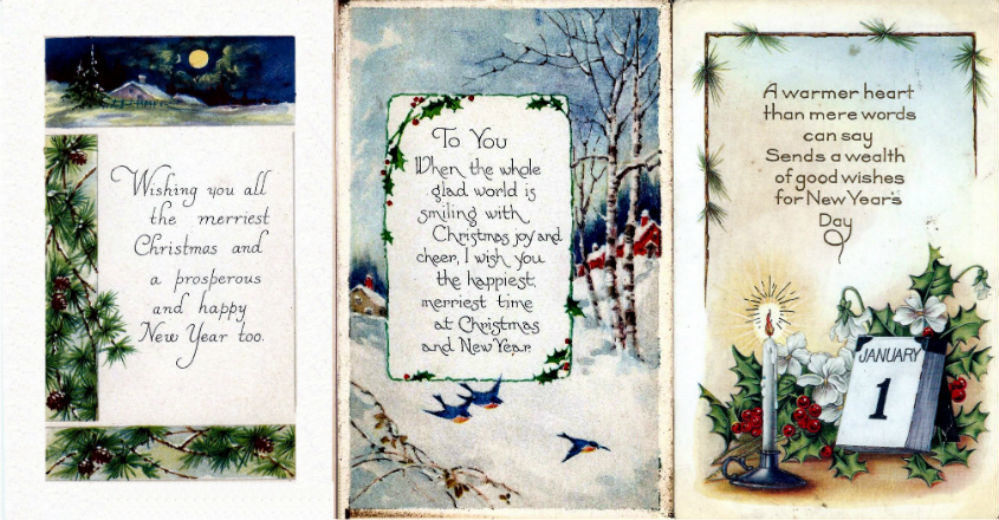
Many American companies attempted to satisfy the demand for postcards but the quality was not up to the standards of the chromolithographs from Germany. The stock was often insubstantial, even flimsy, the colors dull, and the subject matter mediocre; white borders economized on ink. The term White Border Era is loosely descriptive in the sense that a majority of postcards produced during this time were printed with a white border around the image. It is not an absolute, however, in that not every postcard with a white border is from this time period nor does every postcard from this time period have a white border. It is not unusual to find postcards from the Golden Era reprinted with a white border during the White Border Era; however, when comparing the quality the difference is obvious.
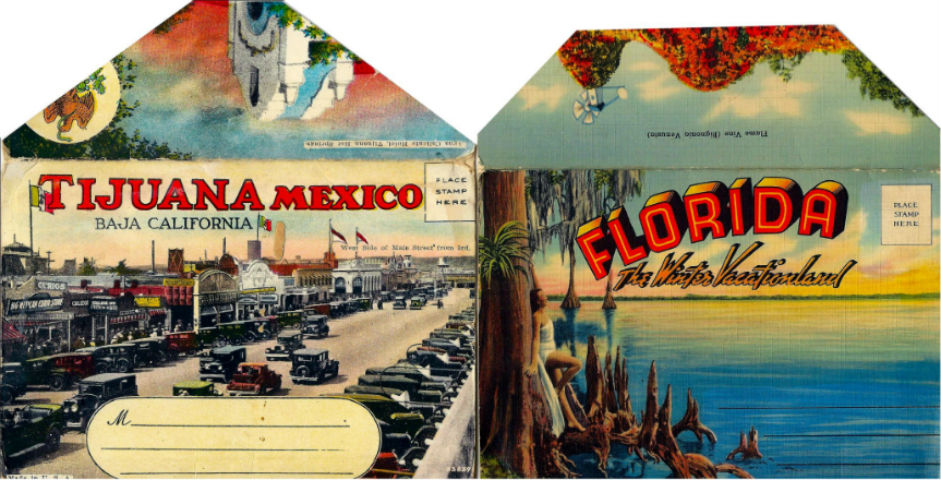
There are many books and price guides about antique and vintage postcards that include three more “eras” identified as Real Photo, Art Nouveau, and Art Deco (an abbreviation of the French “Arts Décoratifs”). The latter two are actually styles of art and in terms of postcards, the Art Nouveau and Art Deco styles overlap the postcard eras. Art Nouveau style postcards existed during the Pioneer Era, Private Mailing Card Era, Undivided Back Era and the Divided Back Era. Art Deco postcards existed during the Divided Back Era, White Border Era, Linen Era and the early part of the Photochrome Era.
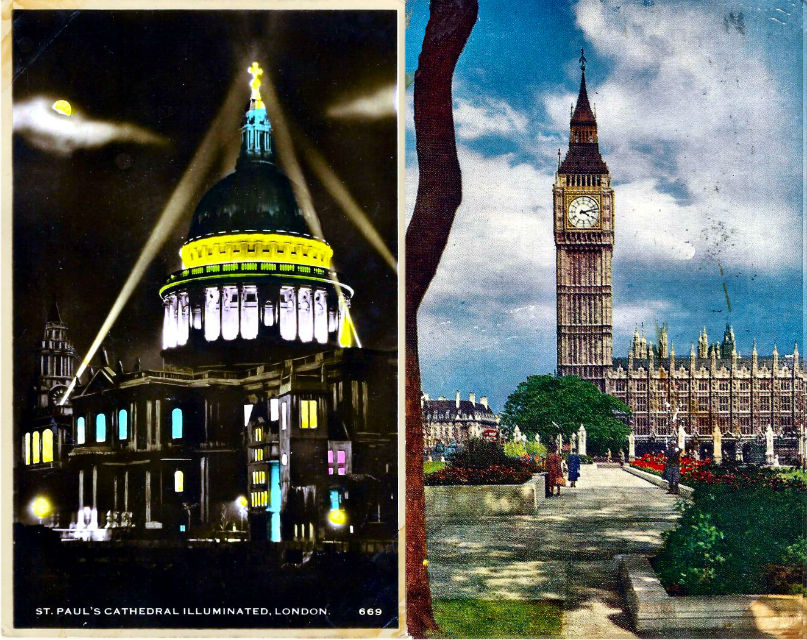
Because the average antique dealer, flea market vendor and garage sale merchant know little about postcards, it is a field of collectibles that is forever ripe with little treasures at bargain prices
___
By Dr. ANTHONY J. CAVO
This article was reprinted with permission from Antique Trader. To enjoy more of what Antique Trader has to offer, log on to www.antiquetrader.com


